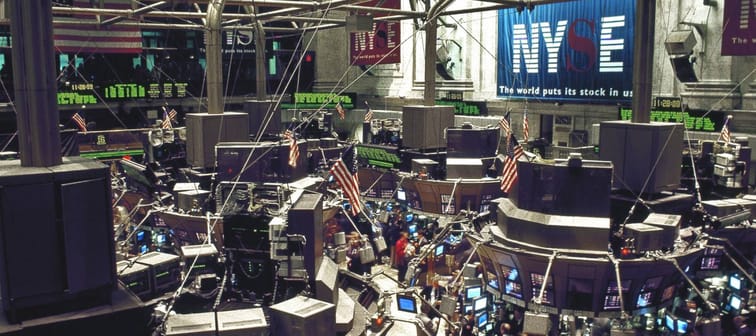The difference between primary and secondary markets
There are two types of capital markets: primary and secondary markets.
Primary markets are exclusive to specific investors buying securities (stocks) directly from companies. Also known as primary offerings or initial public offerings (IPOs), shares of these stocks are sold to large-scale or institutional investors like mutual funds or hedge funds when a company goes public.
In contrast, secondary markets come with consistent oversight from regulatory organizations like the Canadian Securities Administrators, or the Securities and Exchange Commission (SEC) in the U.S.
Secondary markets are where already-issued stocks are exchanged, like the Toronto Stock Exchange (TSX) or the New York Stock Exchange (NYSE). The issuing companies don’t have any direct involvement in the buying and selling of securities on the secondary market.
Electronic exchanges like the Nasdaq are also secondary markets and most regular equity and bond investors only ever trade on secondary markets.
Empower your investments with Qtrade
Discover Qtrade's award-winning platform and take control of your financial future. With user-friendly tools, expert insights, and low fees, investing has never been easier.
Start Trading TodayHow the capital markets came to be
Financial historians note people have been exchanging stocks long before the practice was formalized and regulated. Historians who study markets and trading note that in Europe lenders in Venice exchanged debts as far back as the 1300s.
The concept was refined by the Dutch East India Company in Amsterdam in 1602, when it became the first publicly traded company on the Amsterdam Stock Exchange. For many years, the Dutch East India Company was the only one actively trading on the market, selling shares to investors to help bankroll its expeditions in the spice trade and slave trade.
The Dutch East India Company also issued bonds to fund specific ventures. Because voyages were risky — both from a safety and a financial success perspective — the company relied on its investors’ support, alongside a royal charter, to remain afloat.
It was also the first company to pay its shareholders dividends, which Historians note it issued from 1602 to 1696. The practice remains common today.
Evolving technology, consistent purpose
Today, the basic function of the capital markets remains largely the same.
While electronic exchanges and high-speed trading mean the timing of trades no longer depends on how fast a brokerage runner can sprint across an exchange floor, the markets’ basic premise of bringing capital to companies so that they can bring products to consumers and grow is still in place.
Public investors who buy a company’s shares are demonstrating confidence in its viability as a business. While modern companies now depend on shareholder investment to buy things like rare earth minerals that will go into batteries for electric cars rather than spices being shipped to Europe’s ports, the basic purpose of public capital hasn’t changed much.
Exchanges on the primary market help set a company’s value and introduce its stock to groups of investors eager to fund its next stage.
And on the secondary market, the value of each share serves as a measurement of the company’s overall financial performance. Companies that are doing well with a positive outlook generally command higher stock share prices.
Wise investors will look for companies with value and growth potential while they’re still reasonably priced. But it’s always been a matter of timing: Investors want to spot the diamond in the rough before everyone else sees it too.
Trade Smarter, Today
Build your own investment portfolio with the CIBC Investor's Edge online and mobile trading platform and enjoy low commissions. Get 100 free trades and $200 or more cash back until March 31, 2025.







